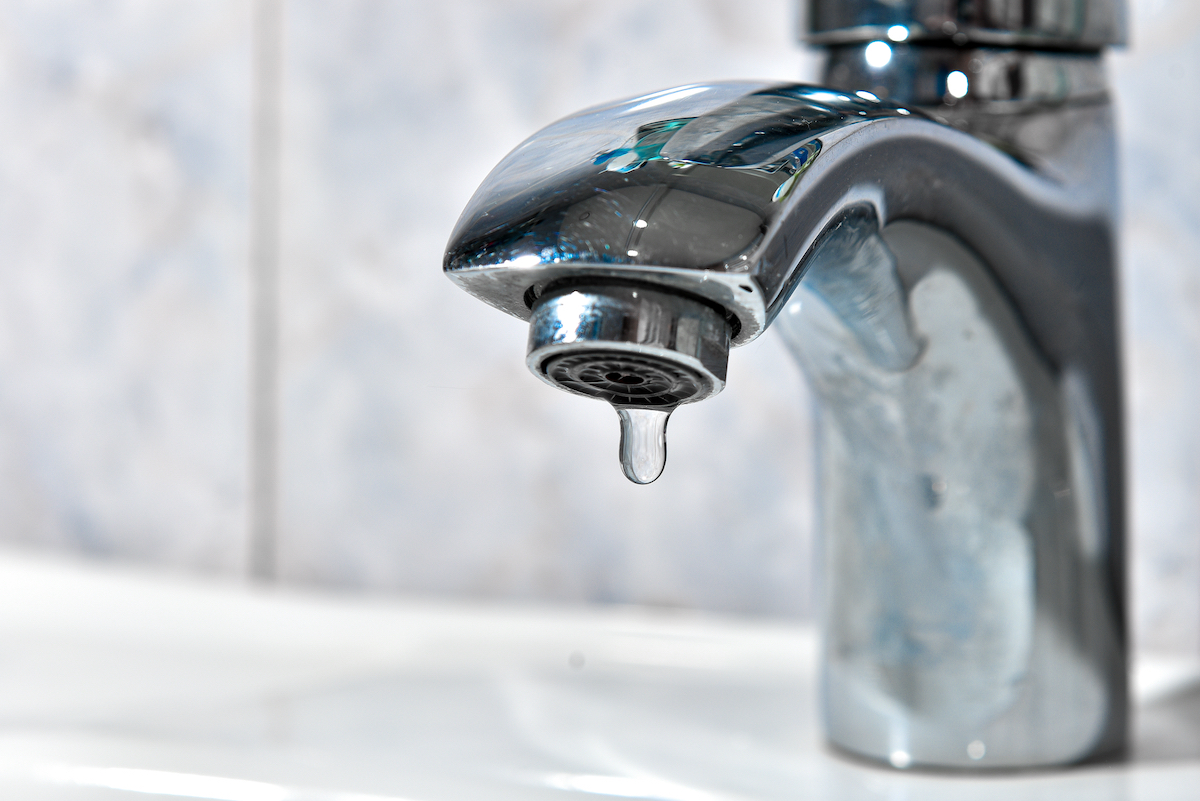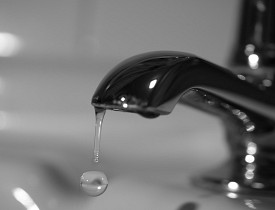Uncovering the Significance of Resolving a Malfunctioning Faucet
Uncovering the Significance of Resolving a Malfunctioning Faucet
Blog Article
How do you feel on the subject of What Causes Leaky Faucets & How To Fix Them?

Leaking faucets could feel like a small hassle, however their effect surpasses simply the aggravation of the noise. From wasting water to sustaining unneeded economic expenses and health and wellness risks, disregarding a dripping tap can bring about different repercussions. In this article, we'll look into why it's critical to address this common household issue promptly and properly.
Wastefulness of Water
Environmental Impact
Dripping taps contribute considerably to water wastage. According to the Epa (EPA), a solitary tap dripping at one drip per secondly can squander more than 3,000 gallons of water per year. This not just strains water sources but additionally impacts communities and wild animals depending on them.
Step-by-Step Guide to Fixing a Dripping Tap
Tools Needed
Before trying to fix a trickling faucet, collect the required devices, including an adjustable wrench, screwdrivers, substitute components (such as washers or cartridges), and plumber's tape.
Usual Faucet Issues and Their Solutions
Recognize the sort of faucet and the particular concern creating the drip. Common problems include worn-out washing machines, corroded valve seats, or faulty O-rings. Refer to maker instructions or on the internet tutorials for detailed assistance on fixings.
Financial Costs
Boosted Water Costs
Past the environmental impact, dripping taps can blow up water bills significantly. The accumulated waste gradually translates into higher energy expenses, which might have been stayed clear of with prompt repairs.
Prospective Property Damage
Additionally, extended trickling can result in damage to components and surfaces surrounding the faucet. Water build-up can create discoloration, deterioration, and even structural issues if left ignored, leading to extra repair service prices.
Health and wellness Worries
Mold And Mildew and Mold Development
The continuous existence of dampness from a trickling tap develops an excellent setting for mold and mildew and mold development. These fungi not only compromise indoor air quality but also pose health threats, specifically for people with respiratory system problems or allergies.
Waterborne Conditions
Stationary water in leaking faucets can end up being a breeding ground for bacteria and other pathogens, raising the threat of waterborne conditions. Pollutants such as Legionella germs flourish in stagnant water, potentially resulting in serious ailments when consumed or inhaled.
DIY vs. Specialist Repair service
Benefits and drawbacks of DIY Repair Work
While some might attempt to fix a trickling tap themselves, DIY repairs feature their own collection of obstacles. Without appropriate knowledge and devices, DIY efforts can worsen the issue or lead to insufficient repairs, prolonging the trouble.
Benefits of Employing a Professional Plumber
Employing a professional plumber makes certain that the underlying reason for the trickling faucet is addressed successfully. Plumbings have the knowledge and tools to identify and fix faucet problems successfully, saving time and lessening the risk of additional damages.
Ecological Obligation
Specific Payment to Conservation
Taking obligation for dealing with dripping taps straightens with broader efforts towards water preservation and environmental sustainability. Every individual's activities jointly make a significant impact on protecting priceless sources.
Sustainable Living Practices
By prioritizing timely fixings and adopting water-saving practices, people add to lasting living practices that benefit both present and future generations.
Safety nets
Regular Maintenance Tips
To avoid leaking taps, execute routine maintenance such as cleaning aerators, examining for leaks, and changing damaged components without delay. In addition, take into consideration mounting water-saving tools or updating to extra reliable components.
Importance of Prompt Repairs
Dealing with leaking faucets as soon as they're discovered avoids additional water wastefulness and possible damages, inevitably conserving both water and money over time.
Effect On Building Worth
Perception of Well-Maintained Residential Property
Maintaining a residential or commercial property in good condition, including dealing with upkeep concerns like leaking faucets, enhances its perceived worth and charm amongst possible customers or renters.
Impact on Resale Worth
Properties with properly maintained plumbing components, consisting of taps, command greater resale worths in the realty market. Dealing with trickling faucets can add to a positive impression during home inspections and settlements.
Final thought
Addressing a dripping faucet goes beyond simple benefit; it's an essential step towards preserving water, decreasing monetary prices, and securing wellness and residential or commercial property. Whether with DIY repair services or professional support, acting to deal with dripping taps is a little yet impactful way to promote liable stewardship of sources and contribute to a healthier, much more lasting future.
Most Common Reasons for a Leaky Faucet and How to Stop the Drip
Whether it’s your kitchen faucet leaking or a bathroom faucet leaking, one leaky faucet can waste anywhere from three to 30 gallons of water every single day. If the constant drip-drip-drip doesn’t get your attention, your water bill will. The good news is that, by following a few simple steps, chances are pretty good you can fix the problem yourself.
Why is it dripping?
Before you start taking things apart, let’s break down some of the most common causes of a leaky faucet.
Bad O-ring.
A cartridge is a valve that controls the flow of water into the faucet spout. On cartridge faucets there’s an O-ring—the little disc attached to the stem screw that holds the faucet handle in place. If it’s loose or worn-out, it can cause your sink handle to leak. Of course, the cartridge itself could be worn out. If that’s the case, make sure you replace it with the exact same kind.
Corroded valve seat.
The valve seat connects the faucet and the spout. If the leak seems to be coming from the spout, it might be because a buildup of water sediment has corroded the valve seat.
Worn-out washers or seals.
A leaky spout could be caused by a bad washer that rests against the valve seat. It’s just a matter of time before friction takes its toll. It could also be the wrong size washer or one that’s been installed incorrectly. Water sediments can also corrode inlet and outlet seals.
Water pressure.
If the faucet only drips now and then, or when you turn the handles a certain way, you should probably check your home’s water pressure.
Loose or broken parts.
The adjusting ring and packing nuts in the stream screw can become loose over time, causing your sink handle to leak. Try tightening or replacing the packing nut. If the leak is coming from the pipes underneath the sink, you probably have a broken pipe or fitting. If that’s the case, you should definitely call a plumber.
Know your faucet.
Faucets come in a variety of types. Each one has its own assembly—and its own possible causes of leaks. Learning about the four most common kinds of faucets will help you know how to take them apart and make any repairs.
How to stop a leaky faucet
Fixing that leaky faucet doesn’t have to take a lot of time, money, or expertise. It’s usually a simple matter of replacing a worn-out washer or gasket, a loose O ring, or another part. Chances are really good you can do this yourself if you follow these simple steps.
Shut off the water.
Before you tackle the faucet, cut off the water supply to the sink. There should be one valve for hot and one for cold. Hand-turn them clockwise with your hands till they close. If there are no valves under the sink, head to the basement and shut off the main water supply to the house. Then turn on the faucet until it empties out the water that’s still in the line and you’re ready to start. It’s a good idea to cover the sink drain with a plug or a rag so you don’t lose any small pieces and parts while you’re working.

I came across that piece of writing on while browsing the internet. I beg you take the time to share this content if you liked it. Thanks for taking the time to read it.
Report this page